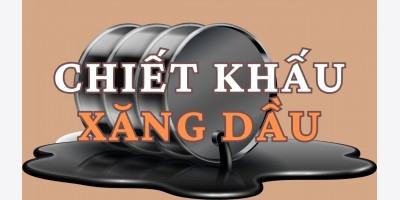Dầu thô giao dịch cáºn mức cao 3 ngày tại thị trÆ°á»ng New York khi giá»›i đầu tÆ° nháºn định rằng Mỹ Ä‘ang trên Ä‘à tăng trưởng trở lại, nâng mức nhu cầu tại quốc gia tiêu thụ lá»›n nhất thế giá»›i. Các nhà máy lá»c dầu Ä‘ã nối lại sản xuất khi cÆ¡n bão nhiệt Ä‘á»›i Irene Ä‘ang tiến vá»
Giá giao sau dao Ä‘á»™ng nhẹ sau khi tăng lên 0.4%. Chủ tịch Cục Dá»± trữ liên bang ông Ben S. Bernanke hôm 26/8 phát biểu, tăng trưởng kinh tế Mỹ hiện giá» khá an toàn trong dài hạn, và Fed vẫn có thể sẵn sàng há»— trợ cho kinh tế phục hồi. Các nhà máy lá»c dầu trên khắp bá» biển phía Äông Ä‘ã hoạt Ä‘á»™ng các nhà máy vá»›i công suất tÆ°Æ¡ng Ä‘Æ°Æ¡ng hoặc xấp xỉ mức trung bình sau khi cÆ¡n bão Irene suy yếu. Phe chống đối
Dầu thô giao tháng 10 đạt 85.27 USD/thùng, giảm 10 cent trong giao dịch Ä‘iện tá» tại sàn New York Mercantile Exchange lúc 10h41, giá» Sydney. Giá hợp đồng hôm 26/8 tăng 7 cent lên mức 85.37 USD/thùng, mức cao nhất từ sau hôm 23/8. Giá hiện Ä‘ã cao hÆ¡n 14% so vá»›i năm ngoái.
Dầu thô Brent giao tháng 10 đạt 111.10 USD/thùng, giảm 26 cent trên sàn ICE Futures Europe – London. Giao dịch chuẩn châu Âu chênh lệch 25.81 USD/thùng so vá»›i dầu thô Mỹ, thấp hÆ¡n mức ká»· lục 26.21 USD hôm 19/8.
NgÆ°á»i đứng đầu bá»™ pháºn sản xuất của Há»™i đồng Chuyển tiếp Quốc gia, ông Nouri Balroin, cho biết, sản lượng Libya sẽ sá»›m được nối lại trong vòng 3 tuần, Al Jazeera Ä‘Æ°a tin tối qua cho biết. Các chuyên gia dầu má» sẽ tiến hành theo sát má»™t kế hoạch 3 giai Ä‘oạn để khôi phục sản lượng dầu má» lên 1.6 triệu thùng/ngày trong vòng 15 tháng.
Oil Trades Near Three-Day High; Refineries
By Ben Sharples - Aug 29, 2011 7:56 AM GMT+0700
inShare
2More Print Email
Oil traded near a three-day high in New York as investors speculated that growth will resume in the U.S., spurring demand in the world’s biggest crude consumer. Refineries resumed production as Tropical Storm Irene headed toward
Futures fluctuated after climbing as much as 0.4 percent. Federal Reserve Chairman Ben S. Bernanke said on Aug. 26 that
“Bernanke is suggesting that there are some good, some negative economic indicators and there is a chance of a double- dip, but overall he feels that the base has been laid for long- term growth,” said Jonathan Barratt, a managing director of Commodity Broking Services Pty in Sydney, who predicts crude in
Crude for October delivery was at $85.27 a barrel, down 10 cents, in electronic trading on the New York Mercantile Exchange at 10:41 a.m.
Brent oil for October settlement was at $111.10 a barrel, down 26 cents, on the London-based ICE Futures Europe exchange. The European benchmark traded at a premium of $25.81 to
Nouri Balroin, the head of the National Transitional Council’s production unit, said Libyan output will resume within three weeks, Al Jazeera reported yesterday. Oil experts will follow a three-stage plan to restore the flow of oil to 1.6 million barrels a day within 15 months, he said, according to the Qatar-based network.
The Libyan revolt, which began in February, has reduced the availability of light, sweet crude, or oil with low density and sulfur content. The country’s output fell to 100,000 barrels a day last month, a Bloomberg News survey showed. That’s less than 10 percent of the 1.6 million barrels the nation pumped in January, before the uprising.









